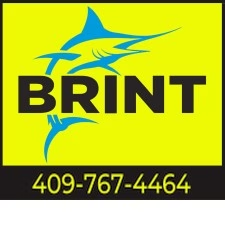
This column addresses two categories of accident statistics from the 2024 Boating Accident Statistics, the latest statistics we have for a full year. Last week’s column, titled Please Be Seated, discussed the latest statistics also, and concentrated on improper boat loading. This week we will look at the top two primary incident types, both of which involve collisions.

The Base Galveston Flotilla of the US Coast Guard Auxiliary operates out of the US Coast Guard base on Galveston Island. They aid the Coast Guard by providing maritime observation patrols in Galveston Bay; by providing recreational boating vessel safety checks; and by working alongside Coast Guard members in maritime accident investigation, small boat training, providing a safety zone, Aids to Navigation verification, cooking in base and station galleys and aboard cutters; and as drone pilots on the Coast Guard Drone Team.
Collision with Fixed Object
Folks, we are talking about something that can’t possibly get out of your way. This type of incident is totally on the boat operator. This incident type refers to incidents where the boat rammed something fixed in place such as the dock, a jetty, an aid to navigation, a capped off well head, or even a three-story high drilling rig.
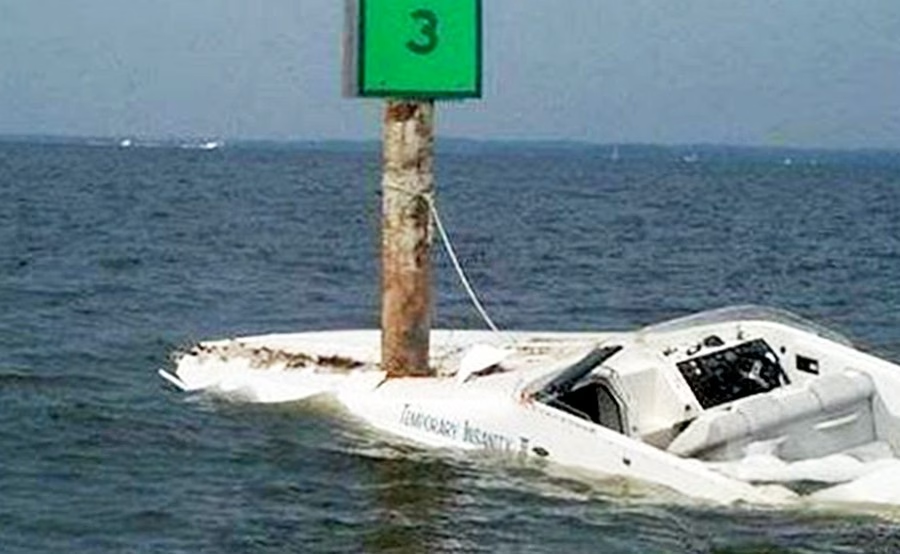
Here are some possible causes of collisions with a fixed object:
- Operator inattention
- No lookout other than the boat operator
- Unfamiliarity with the area
- Alcohol use
- Speeding
- Operator distracted
You could think up some more causes if you think about it. One that comes to mind is improper use of the autopilot. The purpose of the autopilot is to relieve your hands and arms from the fatigue created by having to steer the boat, especially when you have a great distance to travel. The autopilot does not go around fixed objects. It just steers a constant heading. It is up to the boat operator to know what fixed objects lie in the path created by that heading. In my area we have two five-mile-long jetties. One or the other is struck at least once a month. Most of the time one or all passengers are ejected from the boat and are injured or killed on the rocks.
Fixed Object Collision Avoidance
The most important thing you can do to avoid a collision with a fixed object is to learn where those fixed objects are located within the area you wish to navigate. We are talking about objects that are fixed to land or fixed to the sea bottom. One of the most useful tools for locating fixed objects is the NOAA chart, whether it be paper or GPS generated.
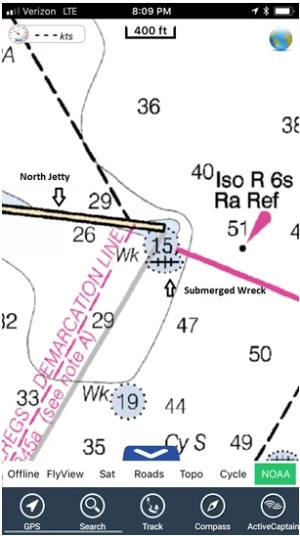
So how many fixed objects can you see in the GPS grab shot? Looking at the chart tells you right away you need to know how to read a chart and know what the abbreviations mean.
Here is what pops out at me:
- North Jetty (it has claimed hundreds of boats and many lives)
- Red flashing aid to navigation on a piling
- Submerged wreck in fifteen feet of water
- Wreck in 19 feet of water.
We added a new concept to the fixed object scenario: Submerged. Just when you thought you had the fixed object danger figured out you find there are dangerous fixed objects below the surface. You have to know where these objects are and avoid them. I had a friend tear the bottom out of his boat when he hit a submerged pipe that was just below the surface. He knew it was there, but thought he was past it and accelerated too soon.
Collision with Vessel
In 2024 there were 747 reported collisions with another recreational boat, making this type of incident the number two cause of boating accidents. Those 1103 collisions resulted in 45 deaths and 689 injuries. The good news is that these figures represent a thirty percent decrease in total collisions with another recreational vessel, but the total deaths increased from 41 to 43, and total injuries increased from 523 to 570. Each of these accidents could have been prevented by simply following the Rules of the Road, also known as the Inland Navigation Rules and the International Regulations for Preventing Collisions at Sea (COLREGS). You can access those rules from your smart phone. You are required to follow them. Let’s look at the most important rules.
Rule 5: Post a Lookout
Designate someone to watch for dangers that may come from any direction. Every vessel shall at all times maintain a proper lookout by sight and hearing as well as by all available means appropriate in the prevailing circumstances so as to make a full appraisal of the situation and of the risk of collision.
Rule 6: Safe Speed
Except where speed is restricted by regulation or the waterway is marked by a “No Wake” or “Slow Speed” aid, you must judge “safe speed” for yourself. You must take into account the following:
- Visibility
- Vessel traffic
- Your boat’s ability to maneuver
- Background lighting at night
- Draft in relation to depth of water
- Weather Conditions (including wind, sea, current and proximity to hazards)
One of my neighbors related a story to me about navigating up the Intracoastal Waterway just before daybreak. He had a lookout on the bow, and they were looking for a certain beacon where they planned to fish. Just as my neighbor noted some navigation lights ahead, his lookout yelled for him to make a sharp turn to the bank. He did, and just barely missed running into the side of a barge tow that had been pushed against the bank.
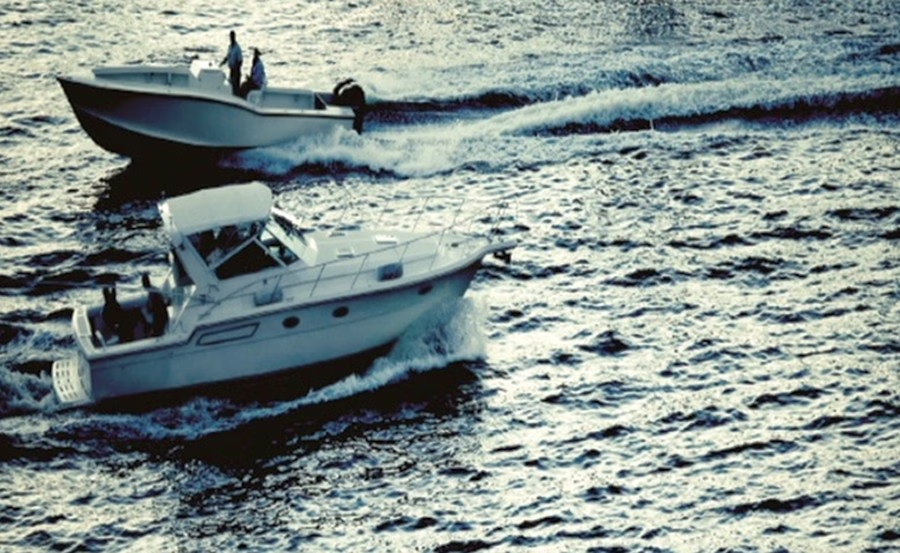
Rule 8: Actions to Avoid a Collision
Below are excerpts from the first five sections of Rule 8:
- Any action taken shall be positive, made in ample time and with due regard to the observance of good seamanship.
- Any alteration of course and/or speed to avoid collision shall be large enough to be readily apparent to another vessel observing visually or by radar; a succession of small alterations of course and/or speed should be avoided.
- If there is sufficient sea room, alteration of course alone may be the most effective action to avoid a close-quarters situation provided that it is made in good time, is substantial and does not result in another close-quarters situation.
- Action taken to avoid collision with another vessel shall be such as to result in passing at a safe distance. The effectiveness of the action shall be carefully checked until the other vessel is finally past and clear.
- If necessary to avoid collision or allow more time to assess the situation, a vessel shall slacken her speed or take all way off by stopping or reversing her means of propulsion.
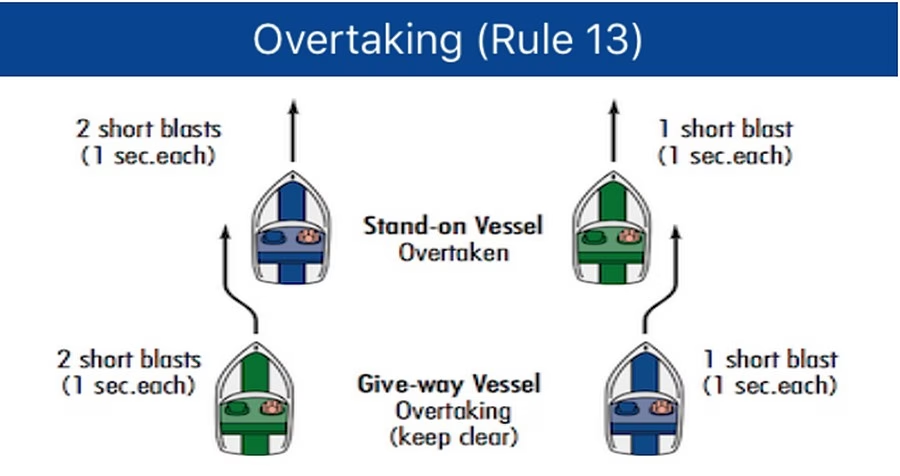
Rule 13 – Overtaking
- Any vessel overtaking any other vessel shall keep out of the way of the vessel being overtaken.
- A vessel shall be deemed to be overtaking when coming up with another vessel from a direction more than 22.5 degrees abaft her beam; that is, in such a position with reference to the vessel she is overtaking that at night she would be able to see only the stern light of that vessel but neither of her sidelights.
- When a vessel is in any doubt as to whether she is overtaking another, she shall assume that this is the case and act accordingly.
- Any subsequent alteration of the bearing between the two vessels shall not make the overtaking vessel a crossing vessel within the meaning of these rules or relieve her of the duty of keeping velar of the overtaken vessel until she is finally past and clear.
Note: Never make a turn or big course change without first making sure you are not being overtaken. A rear-view mirror is a good accessory for any boat, but a proper lookout is a requirement.
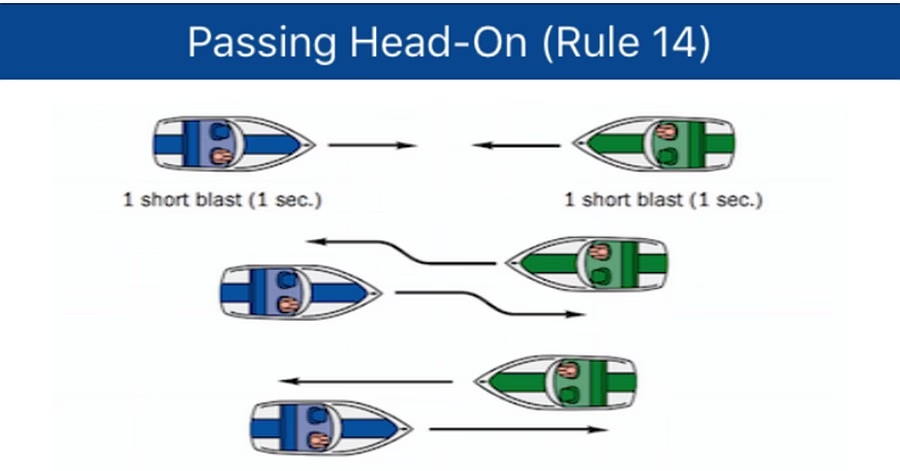
Rule 14: Passing Head-On
Unless otherwise agreed, when two power-driven vessels are meeting on reciprocal or nearly reciprocal (head-on) courses so as to involve the risk of collision, each shall alter her course to starboard so that each shall pass on the port side of the other.
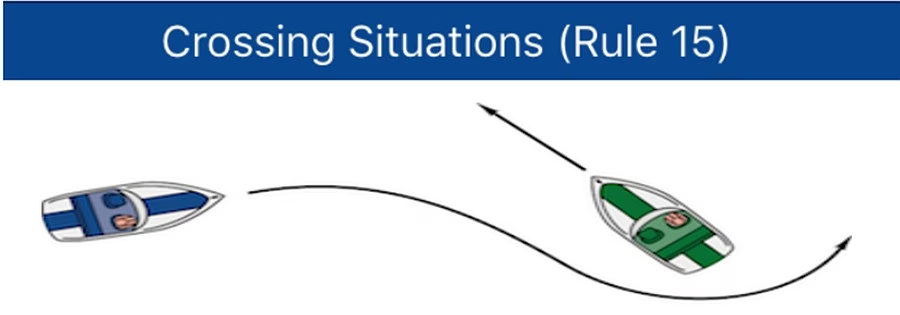
Rule 15: Crossing Situations
When two power-driven vessels are crossing so as to involve a risk of collision, the vessel with has the other on her own starboard side shall keep out of the way and shall, if the circumstances of the case allow, avoid crossing ahead of the other vessel.
Note: It’s so simple: yield to the right, just like driving a car at a four-way stop.
Summary
The top two recreational boating incident types are collision with a fixed object (either above or below the water line) and collisions with other recreational vessels. The dangers are aways there, but the prudent boat operator can reduce the chances of becoming a statistic by following simple safe boating measures.


